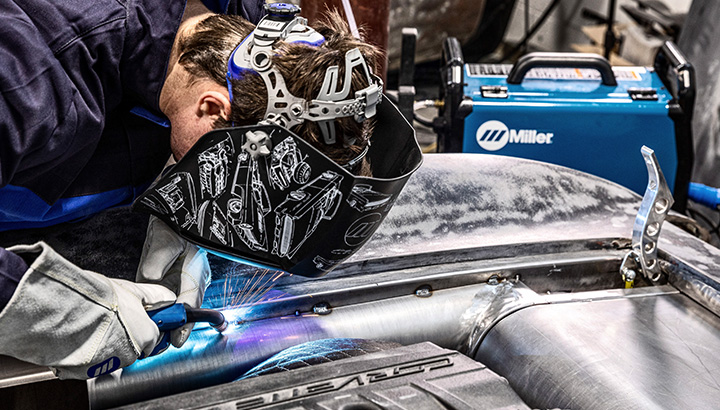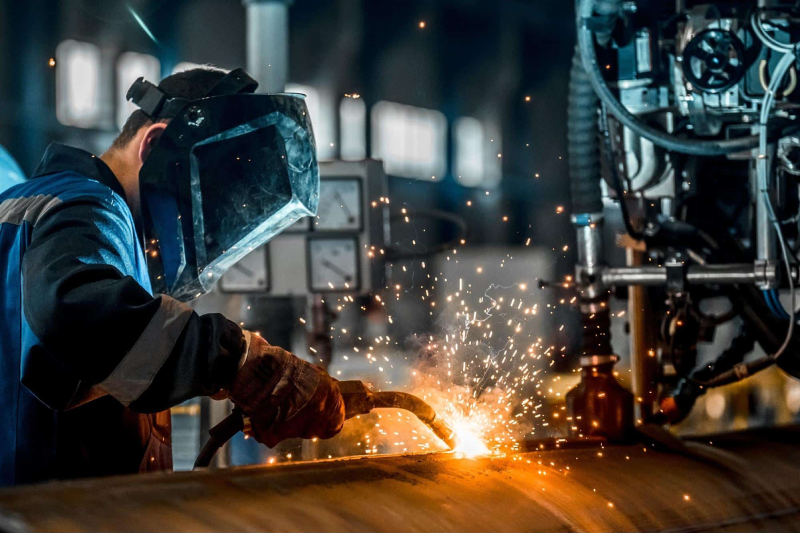Everything about Welding: Trick Insights Into Techniques and Finest Practices for Success
Welding includes a variety of methods, each matched for particular products and applications. Recognizing these techniques, such as GMAW, SMAW, and TIG, is necessary for achieving perfect outcomes. The ideal devices and safety practices can not be overlooked. As preparation and fixing play critical roles in the welding procedure, grasping these elements can significantly enhance the top quality of the end product. What are the key aspects that ensure an effective weld?
Recognizing Various Welding Techniques
Welding techniques encompass a variety of methods, each fit to certain applications and products. Among the most common methods are Gas Metal Arc Welding (GMAW), Protected Metal Arc Welding (SMAW), and Tungsten Inert Gas Welding (TIG) GMAW, likewise called MIG welding, is prominent for its speed and adaptability, making it suitable for slim materials. SMAW, or stick welding, is preferred for its simpleness and performance in outdoor settings, especially with thicker metals. TIG welding supplies precision and control, making it suitable for elaborate work and non-ferrous metals (Montana Mobile Welding and Repair Belgrade Welding). Each technique has its one-of-a-kind benefits and factors to consider, enabling welders to pick the very best technique based on the job's requirements, product kind, and desired outcomes. Recognizing these strategies is vital for effective welding
Crucial Welding Devices and Devices
While various welding techniques call for particular skills, the best equipment and tools are similarly important for achieving quality results. Crucial welding devices consists of welding makers, which differ depending upon the strategy-- such as MIG, TIG, or stick welding. Safety equipment, consisting of aprons, headgears, and gloves, assurances safety and convenience throughout the process. In enhancement, components and clamps assist secure materials in position, guaranteeing precision in welds. Consumables like welding rods, cable, and shielding gas are likewise vital parts that influence the high quality of the weld. Moreover, devices such as cutters and mills facilitate surface area prep work and post-weld ending up, adding to a specialist outcome. Spending in high-quality tools eventually enhances the performance and efficiency of welding jobs.
Safety And Security Practices in Welding
Appropriate safety methods are necessary in the welding market to safeguard workers from potential threats. Welders must use suitable individual safety devices (PPE), including safety helmets with proper shading, gloves, and flame-resistant clothing. Ample air flow is crucial to lower direct exposure to unsafe fumes and gases produced during the welding procedure. Furthermore, employees must be educated in the correct handling of welding devices to stop accidents. Fire precaution, such as keeping flammable materials away from the welding area and having fire extinguishers conveniently available, are necessary. Normal assessments of tools and offices can help identify potential hazards prior to they cause crashes. By sticking to these safety methods, welders can develop a much safer working setting and decrease dangers connected with their profession.
Preparing Materials for Welding
Preparing materials for welding is an important action that considerably influences the high quality and stability of the last item (Fabrication). Correct preparation entails cleaning the surface areas to get rid of impurities such as oil, rust, and dirt, which can endanger the weld. Strategies such as grinding, fining sand, or using solvents are commonly utilized to attain a clean surface. Additionally, ensuring that the products fit with each other snugly is necessary; voids can lead to weak welds. It's likewise essential to think about the positioning and positioning of the elements, as this will affect the convenience of welding and the final outcome. Lastly, selecting the proper filler material and ensuring compatibility with imp source the base metals is important for accomplishing solid, long lasting welds
Tips for Getting High-Quality Welds
Attaining top notch welds requires focus to detail and adherence to best methods throughout the welding process. Appropriate joint preparation is vital, guaranteeing surface areas are tidy and complimentary from impurities. Selecting the proper filler material and welding technique based upon the base steels is important for suitable bonding. Preserving constant travel speed and angle while welding can advertise and stop flaws uniformity. In addition, managing warmth input is essential; excessive warmth can result in warping and damaged joints. If needed, regularly examining the welds during the procedure permits for prompt adjustments. Lastly, employing appropriate post-weld therapies, such as cleansing and stress relief, can enhance the resilience and honesty of the weld, eventually making sure a successful end result.
Fixing Typical Welding Issues
Welding often provides obstacles that can impact the top quality and stability of the final item. Common concerns such as porosity, irregular weld grains, and overheating can emerge, each needing particular fixing methods. Comprehending these troubles is essential for welders to enhance their abilities and accomplish suitable results.
Porosity Troubles Clarified
Although porosity can often be forgotten, it continues to be a crucial problem in welding that can compromise the stability of an ended up item. Porosity describes the presence stick welding aluminum of little gas pockets within the weld bead, which can weaken the joint and lead to premature failure. This problem normally develops from impurities, wetness, or inappropriate securing gas protection throughout the welding procedure. To minimize porosity, welders should confirm that the base materials are tidy and dry, use appropriate protecting gases, and preserve regular welding parameters. Consistently checking the tools and atmosphere can also help identify potential issues before they manifest in the weld. Dealing with porosity efficiently is vital for attaining solid, sturdy welds that satisfy quality standards.

Irregular Weld Beans
Irregular weld beads can substantially impact the high quality and toughness of an ended up product. Numerous factors contribute to this issue, consisting of incorrect travel rate, inaccurate amperage setups, and inconsistent electrode angles. When the welder relocates also quickly, a bead may show up narrow and lack penetration, while moving too gradually can cause too much accumulation. In addition, utilizing the incorrect amperage can result in either damaging or too much spatter, both of which concession weld integrity. The welder's strategy, such as inconsistent lantern movement, can likewise bring about uneven grain look. To mitigate these issues, welders must concentrate on keeping stable, controlled activities and ensuring appropriate devices settings to attain uniformity in their welds. Uniformity is crucial to accomplishing reputable and strong welds.
Overheating and Warping Issues
Extreme warm during the welding procedure can bring about substantial overheating and buckling issues, impacting the architectural stability of the workpiece. These troubles typically manifest as distortion, which can compromise placement and fit-up, making further assembly testing. Variables adding to overheating consist of the option of welding parameters, such as voltage and travel speed, in addition to the kind of product being welded. To reduce these concerns, welders ought to maintain regular traveling speed and proper heat input while checking the workpiece temperature. Furthermore, pre-heating or post-weld warmth therapy can aid ease stress and anxieties triggered by fast cooling - Welding. Regular inspection and adherence to finest techniques are vital in preventing getting too hot and guaranteeing the long life and reliability of bonded structures
Often Asked Concerns
What Are the Job Opportunities in the Welding Market?
The welding sector provides diverse occupation opportunities, including settings as welders, instructors, inspectors, and designers. Experts can operate in manufacturing, construction, aerospace, and vehicle markets, taking advantage of strong demand and affordable salaries in different roles.
Exactly How Can I Improve My Welding Rate Without Compromising High Quality?
To boost welding speed without sacrificing high quality, one need to practice effective techniques, preserve devices, enhance settings, and improve hand-eye sychronisation. Regular training and looking for feedback can also considerably add to achieving faster, high-grade welds.
What Accreditations Are Readily Available for Welders?
Many accreditations exist for welders, consisting of those from the American Welding Culture (AWS), the National Facility for Building Education And Learning and Study (NCCER), and different industry-specific organizations. These qualifications boost employability and demonstrate ability efficiency.
Just How Does Welding Influence the Qualities of Metals?
Welding affects the homes of metals by altering their microstructure, which can bring about changes in solidity, toughness, and ductility. Heat input and cooling rates throughout the process significantly impact these material features.
Can I Weld Dissimilar Metals Together?
